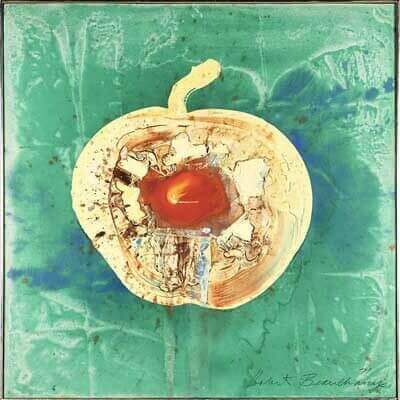Beauchamp Robert
Robert Beauchamp was born in Denver, Colorado, in 1923. His childhood was marked by hardship, as he and his six siblings were orphaned by the age of three. Growing up during the Great Depression, the family lived in a community house with other families, facing economic challenges. Despite these difficulties, Beauchamp found solace in art from a young age. His passion for drawing was encouraged in high school by a Welsh teacher named R. Idris Thomas. Under Thomas’s guidance, Beauchamp developed a deep interest in French painting, spending considerable time at the local library and museum to study.
His dedication to art earned him the Carter Memorial Prize, providing a scholarship to the Colorado Springs Fine Arts Center. There, he studied under Boardman Robinson, focusing on painting landscapes. However, Beauchamp’s artistic path was not linear; after serving in the Navy, he returned to Colorado Springs before attending Cranbrook Academy of Art, where he initially pursued pottery and later transitioned to sculpture and painting.
In the early 1950s, Beauchamp moved to New York City and became part of the vibrant Tenth Street galleries scene, showcasing experimental and abstract expressionist art. Although he mingled with abstract artists, Beauchamp remained uninterested in abstraction, feeling it had become stagnant. His first exhibition took place at the Tanager Gallery, followed by shows at the Hansa and Green Galleries during the 1950s and 60s.
Beauchamp’s artistic style was defined by dramatic creatures and figures rendered in expressionistic colors. The New York Times described his work as “both frightening and amusing.” Known for his spontaneous approach, Beauchamp preferred little planning in his creations, believing that too much could lead to staleness. His paintings featured heavily impastoed surfaces achieved through pouring paint directly from cans, with techniques he likened to “splattering” and “pushing the paint around.”
In 1960, Beauchamp was awarded a Fulbright Award, which allowed him to travel and work in Italy. During this period, he frequently visited Rome and honed his craft. Upon returning to the United States, he resided in Provincetown, where he met his future wife, Nadine Valenti, whom he married in 1967. Throughout his life, Beauchamp taught at several prestigious institutions, including Brooklyn College, School of Visual Arts, Cooper Union, and the Art Students League of New York.
Robert Beauchamp passed away in March 1995, succumbing to prostate cancer in New York. His legacy as a figurative painter and arts educator is enduring. He was recognized as a Guggenheim Fellow and was a student of Hans Hofmann, reflecting his significant contributions to the art world. Beauchamp’s work continues to captivate audiences with its unique blend of whimsy and profundity, leaving a lasting impression on figurative art.
Apple, 1971
